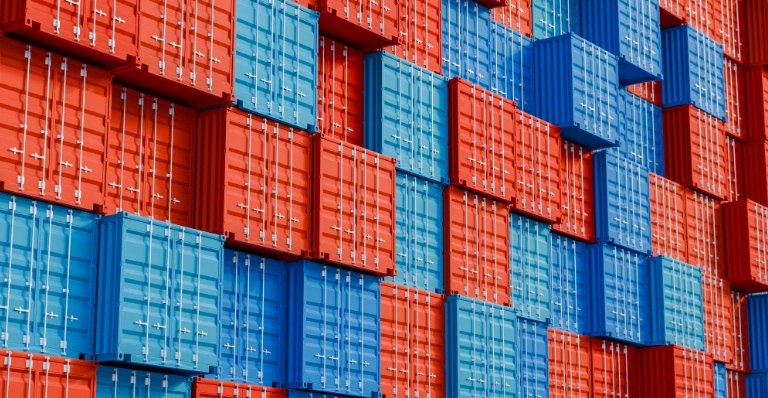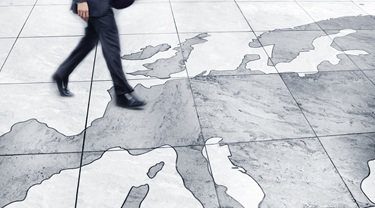Efforts to reach carbon neutrality, boost competitiveness, meet global demand and achieve strategic autonomy have led the European Union (EU) to prioritize the domestic development and reliable supply of 34 critical raw materials (CRMs). Minerals such as lithium, cobalt, nickel, graphite, copper and rare earth elements (REEs) are essential to managing the energy transition, keeping pace with the digital transformation, narrowing the infrastructure deficit and supporting remilitarization plans worldwide.
However, the EU is currently dependent on imports of multiple CRMs from jurisdictions subject to varying degrees of geopolitical volatility. In 2024, for example, 95% of the bloc’s imports of REEs came from China, Malaysia and Russia combined. Similar to its push to diversify energy supplies following Russia’s full-scale invasion of Ukraine in 2022, the EU now has a strategic imperative to secure reliable access to CRMs.
Europe’s strategic critical mineral priorities
In May 2024, the EU implemented the Critical Raw Materials Act (CRMA), setting targets for 17 strategic raw materials (SRMs)—CRMs that are considered highly strategic and in short supply. By 2030, the EU aims to:
- Produce at least 10% of its consumed mined output;
- Process at least 40% of its consumed processed output; and
- Recycle at least 25% of its consumed recycled output.
The CRMA also limits imports from any single foreign supplier to no more than 65% for each SRM.
To help achieve these targets, the EU has streamlined permitting processes and launched initiatives such as the European Raw Materials Alliance and Important Projects of Common European Interest, designed to fast-track approvals and provide public funding. So far this year, 47 strategic projects have been selected, benefiting from accelerated permitting and access to potential financing and off-takers.
The CRMA also identified 13 strategic projects in third countries, including the Magneto Dumont Nickel Project in Quebec—one of the world’s lowest carbon footprint nickel operations—targeting a 2028 production date.
At the national level, Germany’s US$1.1-billion raw materials fund, managed by state-owned KfW, aims to invest in mining, processing and recycling projects both domestically and abroad, helping to reduce dependence on markets such as China. Despite these efforts, Europe may still fall short of its targets—creating opportunities for stable, geopolitically aligned partners like Canada.
You should also check out
With growing risks, Canadian companies face new challenges. EDC’s Global Economic Outlook offers insights to help you make better business decisions.
The Canadian opportunity: Dual-use minerals
Canada has access to multiple critical minerals considered dual-use—meaning they serve both civilian and defence applications, making them more resilient to economic and industry shocks.
According to the U.S. Geological Survey, Canada is the fourth-largest producer of aluminum, nickel and platinum, and the leading western supplier of these critical minerals. Canada also has significant copper reserves. All of these are on the EU’s SRMs list and align with EU priorities, including aerospace and defence, which now benefit from North Atlantic Treaty Organization (NATO) commitments to increase defence spending.
Canada’s trade advantages under the Comprehensive Economic and Trade Agreement (CETA) further enhance its ability to supply critical minerals to the EU by reducing trade barriers and encouraging investment.
Key dual-use minerals and applications
- Aluminum: Used in automotive, construction, aircraft frames and ammunition.
- Copper: Vital for infrastructure and decarbonization; also used in ammunition and artillery.
- Nickel: Essential for stainless steel and electric vehicle (EV) batteries; also used in artillery and combat aircraft.
- Platinum: Used in catalytic converters for internal combustion engine vehicles and military fuel reforming systems.
Canada also has upcoming projects—set to begin production within the next three to five years—for lithium, cobalt and graphite. These projects are well-positioned to support EU priorities beyond EVs, including:
- Cobalt: Used in aerospace alloys.
- Lithium: Powers electric motors in naval and missile systems.
- Graphite: Used in lightweight armour and aerospace components.
Longer-term and niche opportunities
Other Canadian critical minerals with potential, but likely longer-term plays, include:
- Rare earth elements (REEs): Used in EVs, fighter aircraft, missiles and radar.
- Tungsten: Found in mobile phones, automotive parts, munitions, turbine blades and rocket nozzles; Canada’s Mactung deposit in Yukon and Northwest Territories is world’s largest high-grade source.
- Gallium and germanium: Key to semiconductor and military applications. Rio Tinto is currently exploring the potential for extracting gallium from its Quebec alumina refinery, as the chemical element is a common byproduct of bauxite processing. Canada’s Teck Resources is also looking into expanding its germanium output from its BC-based lead and zinc refinery, which currently recovers germanium as a byproduct.
Notably, aluminum, cobalt, gallium, germanium, graphite, lithium, platinum, REEs, and tungsten are both EU SRMs and NATO defence-critical raw materials. Canada’s commitment to NATO spending, partly through critical mineral development, creates additional opportunities for supplying the defence sector. The June 2025 EU–Canada Security and Defence Partnership, which has paved the way for Canadian suppliers to join EU joint procurement platforms, creates reliable, long-term supply opportunities.
The bottom line: A strategic supply chain opportunity
There are multiple critical minerals with dual-use applications that align with Europe’s strategic priorities, including defence. With increased NATO defence spending and investments in critical minerals, Canada is well-positioned to deepen its competitiveness and relevance as a reliable EU trade partner.
Canada’s trade advantages under CETA, combined with our resource base and geopolitical alignment, make it a natural partner for the EU. As the world transitions to a lower-carbon future, demand for minerals used in clean technologies is surging. In response, the federal government launched its $4-billion Critical Minerals Strategy to position Canada as a global supplier of choice. Export Development Canada (EDC) is playing a central role in supporting this growth and is strongly placed to lead the support of Canadian projects that align with EU priorities. In mining and metals, EDC served 387 customers and facilitated C$7.6 billion in business in 2024.
This week, a very special thanks to Karicia Quiroz and Sasan Fouladirad, analysts in our Economic and Political Intelligence Centre.
As always, at EDC Economics, we value your feedback. If you have ideas for topics that you’d like us to explore, please email us at economics@edc.ca and we’ll do our best to cover them.
This commentary is presented for informational purposes only. It’s not intended to be a comprehensive or detailed statement on any subject and no representations or warranties, express or implied, are made as to its accuracy, timeliness or completeness. Nothing in this commentary is intended to provide financial, legal, accounting or tax advice nor should it be relied upon. EDC nor the author is liable whatsoever for any loss or damage caused by, or resulting from, any use of or any inaccuracies, errors or omissions in the information provided.





